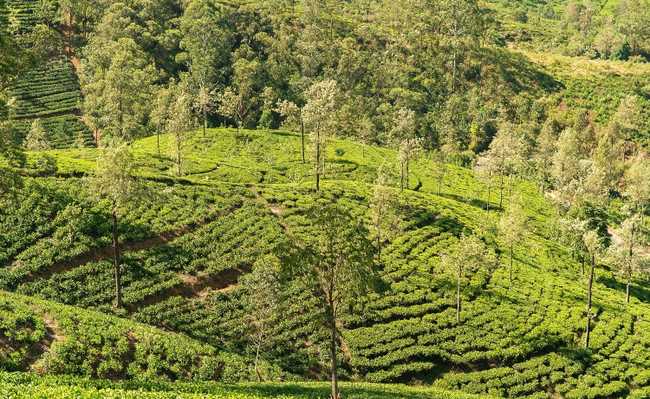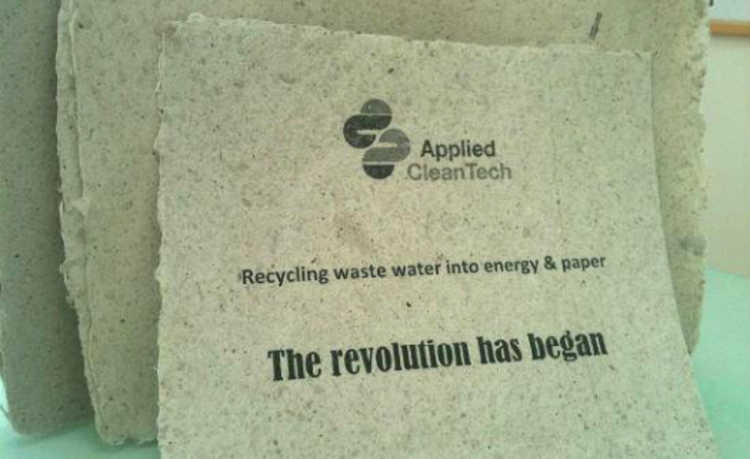Learn about vegetable oil extraction techniques
Understand the most traditional and advanced extraction techniques for vegetable oils

Vegetable oils are fats extracted from plants. Although other parts, such as roots, branches and leaves, can be used to obtain vegetable oil, the extraction takes place almost exclusively from the seeds. Oils are formed by triglycerols (which is the union of three fatty acids to a glycerol molecule) and, due to this nonpolar chemical nature, they are insoluble in water and soluble in organic solvents.
The diversity of vegetable oil sources leads to a great variability of extraction percentages. The usual technologies are extraction by mechanical pressing, with smaller scales and investment orders, and chemical extraction, with larger scales and investments, which use solvents for this, while the most advanced ones perform extraction using supercritical fluid and enzymes.
Regardless of the extraction process used, the preparation of the raw material usually goes through some initial steps before the extraction itself: cleaning, decortication (which is the separation of the husks, if any), crushing, rolling and cooking.
From a chemical point of view, there is no way to select the most efficient methodology for the extraction of these compounds that may be influenced by several factors, such as the nature of the plant, the solvent used in the extraction, the particle size, the time and temperature of extraction.
From an environmental point of view, the choice becomes easier. The pressing method is the most natural, produces a higher quality oil and does not generate toxic residues.
Below, you can learn a little more about each method and from there, make a more conscious choice of the products you purchase according to the environmental impacts generated by each one.
Pressing of vegetable oils
Pressing extraction is a process widely used today for the extraction of vegetable oils on a small scale, to meet local demands of cooperatives, small productions, etc.
Seeds or almonds that have 30% to 50% oil can be subjected to oil extraction in continuous presses, called expeller, or in hydraulic presses (batch process). This process can be used for castor bean, babassu, Brazil nuts and almonds in general, that is, for materials with low humidity (below 10%) and the presence of fibrous material.
Continuous presses are equipped with an endless screw or thread that crushes the material, releasing the oil. Hydraulic presses (discontinuous pressing) have a perforated cylinder where a piston moves, which puts pressure on the raw material (which is inside a cloth or canvas bag).
In this process, there is a lot of internal friction that raises the temperature of the material and oil and thus, the term “cold pressing” does not apply or is very difficult to be achieved under these conditions. Even if it does not heat up before pressing, the heat generated is enough to increase the temperature of the equipment, the partially degreased cake (which is the material left over after pressing) and the oil.
In pressing, the oil extraction is not complete and the cake obtained can present a high residual oil content, which can promote the rancidity of the material, if stored for a long time. In this case, if the raw material contains 50% oil, pressing 100 kg of material will not obtain 50 kg of oil, but a smaller amount of oil and a partially degreased cake. Extraction efficiency depends on equipment, process conditions and raw material.
Thus, pressing materials with low oil content may not be economically viable. On the other hand, oils with high added value, for use in cosmetics, for example, can enable the process of extracting oil by pressing, on this scale.
The oil obtained by pressing is crude oil and, depending on the raw material used, it can be dark and show sediments. As these oils are unrefined they form a dark precipitate on heating. The flavor will not be the same as refined oils and all these factors can lead to product rejection.
From an environmental perspective, it is the method that causes the least impact, as it does not use and does not generate toxic products and waste.
Organic solvent extraction
In organic solvent extraction, the grains are crushed to facilitate penetration of the solvent (hexane – petroleum derivative, ethyl ether, ethanol, methanol, among others) into their interior. The oils migrate from the seeds to the solvent because they have greater affinity with it, and then it is necessary to recover the solvent, which can be reused again in the process.
It is the most commonly used to remove oil from seeds, with an inconvenience: the possibility of thermal degradation of many beneficial components, which are lost in this process, depending on the conditions used in conventional extraction, in addition to the need to eliminate organic solvent of the oil. Therefore, it requires strict control of factors such as selection of the solvent used, the extraction time and temperature, and the production process itself, which, if not properly conducted, can cause leakage of these toxic solvents, polluting the environment and intoxicating people .
Extraction with organic solvents can be efficient in some cases, but it becomes aggressive to the environment due to the products used and waste generated during the use of toxic substances, such as petroleum derivatives, for example, which, as they come from non- renewable energy, can cause serious damage to the ecosystem.
Supercritical fluid extraction
What is a supercritical fluid?
When a compound is confined to a given space, gas and liquid are in balance with each other. By heating the system, the intrinsic properties of both converge towards the same point until they are identical (eg density, viscosity, refractive index, thermal conductivity, etc.). This point is called critical point, and the gas/liquid interface ends there, as from this point on there is a single supercritical phase. Supercritical fluid is, therefore, any substance that is in conditions of pressure and temperature above its critical parameters.
Various properties of fluids (which can be a liquid or gaseous substance) change under these conditions, becoming similar to those of some gases and liquids. The density of supercritical fluid is similar to that of liquids, its viscosity is similar to that of gases, and its diffusion capacity is intermediate between the two states.
Therefore, the supercritical state of fluids can be defined as the state in which liquid and gas are indistinguishable from each other. Due to their low viscosity and high diffusion capacity, supercritical fluids have better transport properties than liquids. These characteristics give the fluid greater capacity to act as a solvent. They can easily diffuse through solid materials, removing the oil and resulting in better extraction yields. Carbon dioxide (CO2), the most used fluid due to its moderate temperature (31.3ºC) and critical pressure (72.9 atm), is gaseous at room temperature.
This methodology is considered desirable because it does not release toxic solvent residues into the environment and has the advantage of obtaining solvent-free products, since the separation between solute (in this case the oil) and solvent (depends on the type used, the The most common is CO2), it occurs by changing the conditions of pressure and/or temperature, so that the solvent used is gaseous under these conditions. Furthermore, this method is indicated when there is a danger of thermal degradation of the extracts, since its operational control allows the use of moderate temperatures.
The food, cosmetic and pharmaceutical industries are interested in supercritical extraction to replace conventional extraction processes (such as extraction with organic solvents and hydrodistillation) to obtain essential oils and oleoresins. Supercritical extraction produces residue-free extracts and can be carried out at low temperatures, preserving the quality of compounds that degrade at high temperatures. The supercritical fluid still has a high selectivity through the variation in temperature and operating pressure, so it is possible to determine the optimal conditions to extract specific substances and thus obtain better yields.
The great inconvenience of supercritical extraction lies in the high pressure required for the operation, which requires excessively expensive equipment, increasing the cost of the final product. Other advantages such as, for example, the high purity of the extracts and the great efficiency of the process can make it viable for application in foods.
Therefore, studies must be carried out in order to optimize these processes and reduce their costs, enabling them as an efficient alternative to control lipid oxidation in oils, fats and fatty foods, also due to the lower environmental impact generated when compared to the method currently used, which is extraction with organic solvents.
Enzyme Extraction
Enzymes are a group of organic substances of a protein nature that are capable of accelerating chemical reactions. They are present in our vital processes, such as food digestion, compound degradation, among many others.
Enzymatic extraction consists of using enzymes that use water molecules to break the cell wall of vegetables, releasing the oil into the aqueous medium. The oil is separated from the water by centrifugation, resulting in a cleaner product than the process that uses organic solvents, for example.
This technology emerges as a potential alternative for the extraction of vegetable oils, since the use of petroleum-derived solvents should be replaced, in the future, by more sustainable technological processes, to meet the requirements of government agencies for environmental protection. Due to the high cost of commercial enzymes, the industrial implementation of this process is limited, so far, to obtaining olive oil being added during the pressing of the olives to improve the extraction process.
The use of maceration enzymes increases the amount of antioxidant agents and vitamin E in extra virgin olive oil, reduces rancidity induction (degradation of fats, which imparts a characteristic flavor and odor), increases extraction efficiency, improves fractionation in the centrifugation and produces oil with low moisture content.
Aqueous-enzymatic extraction is a very interesting process, especially for moist materials or moist fruit pulps, in which water is used as a means of oil transfer. The pulp or oilseed is crushed, diluted with water and enzymes are added to break down the cell wall and release the oil. The process temperature is low, (40 ºC to 60 ºC) in general, and close to the optimum temperature for enzyme activity. After contact under agitation, a centrifugation is necessary to separate solids and the liquid phase, followed by a new centrifugation to separate the oil and water.
The solids must be directed to other processes for protein recovery, depending on the oilseed, followed by its drying or other recovery processes. The water phase must be treated as effluent. This is an interesting process, but it still faces obstacles due to the emulsification that occurs between water and oil and the cost of enzymes.
Now that you know the main methods of extracting vegetable oils, you can make a more conscious choice when purchasing yours. Check out its benefits in the article: "Vegetable oils: know the benefits and cosmetic properties".










